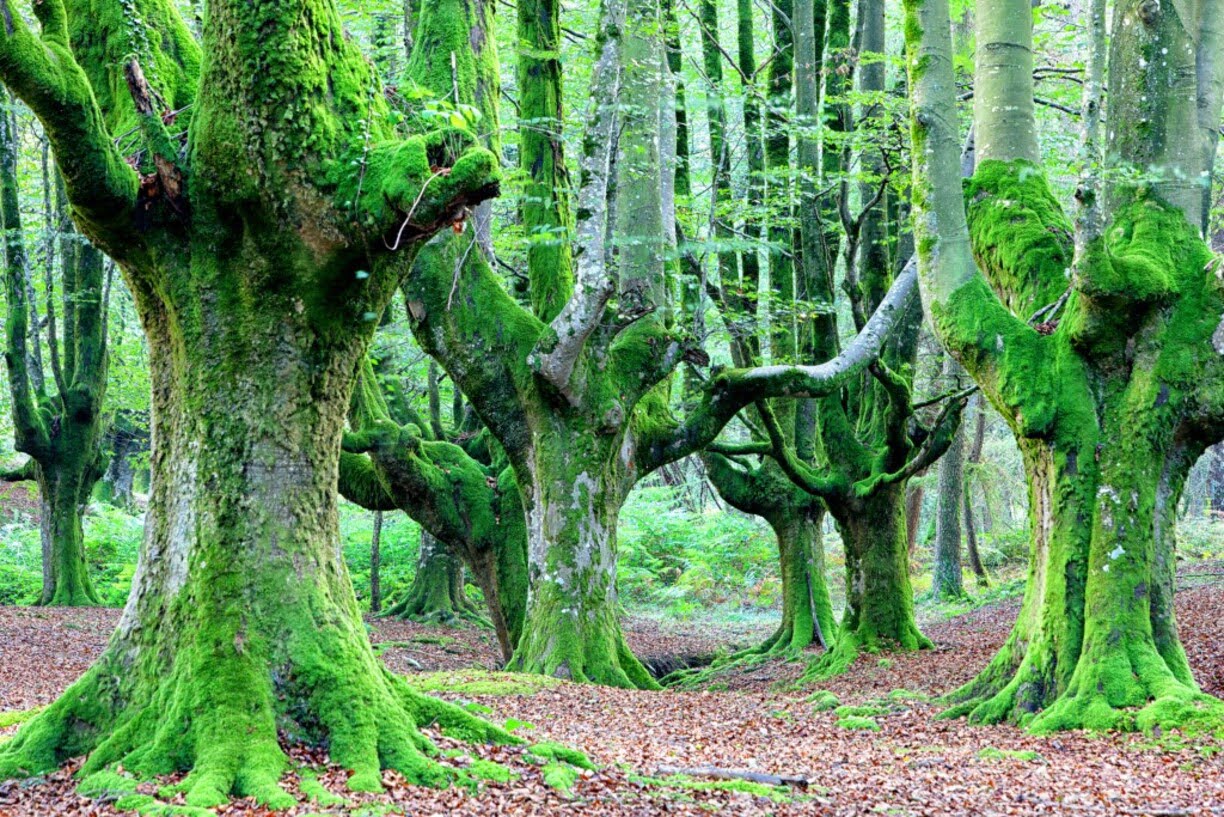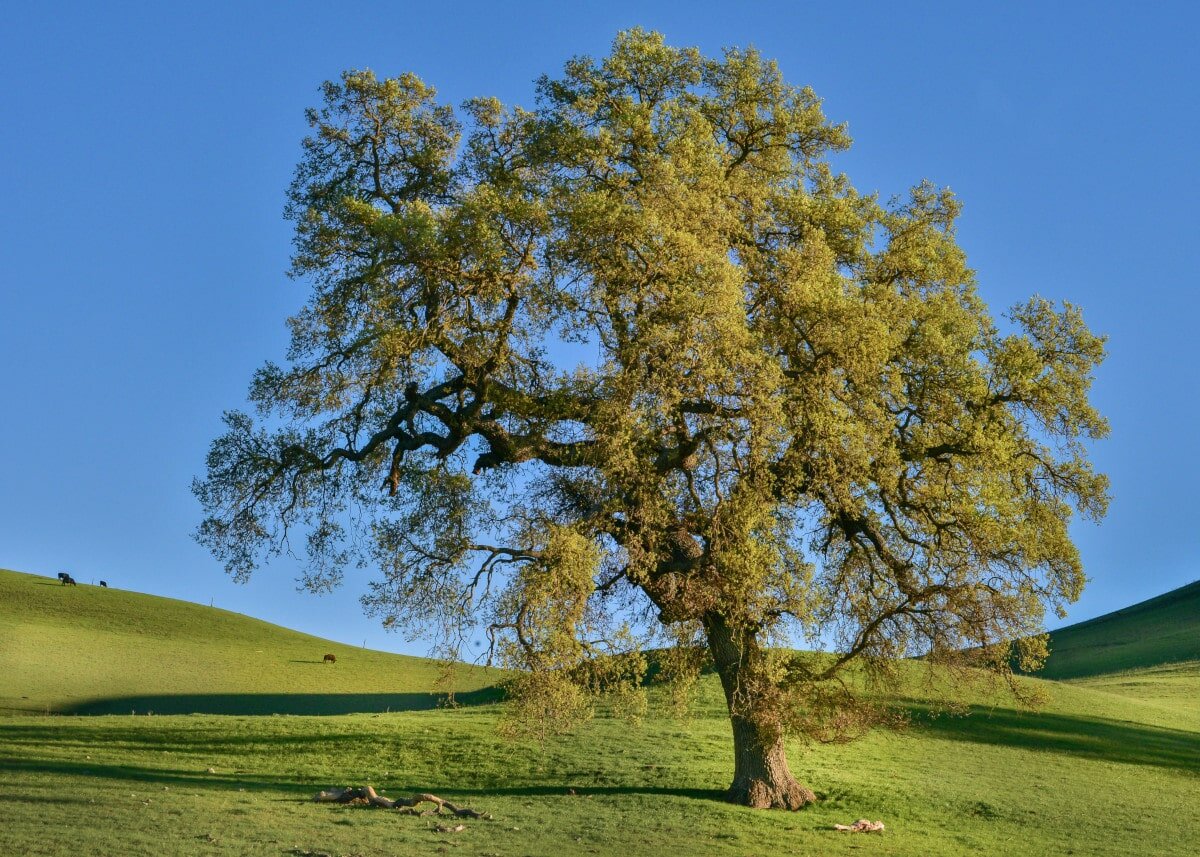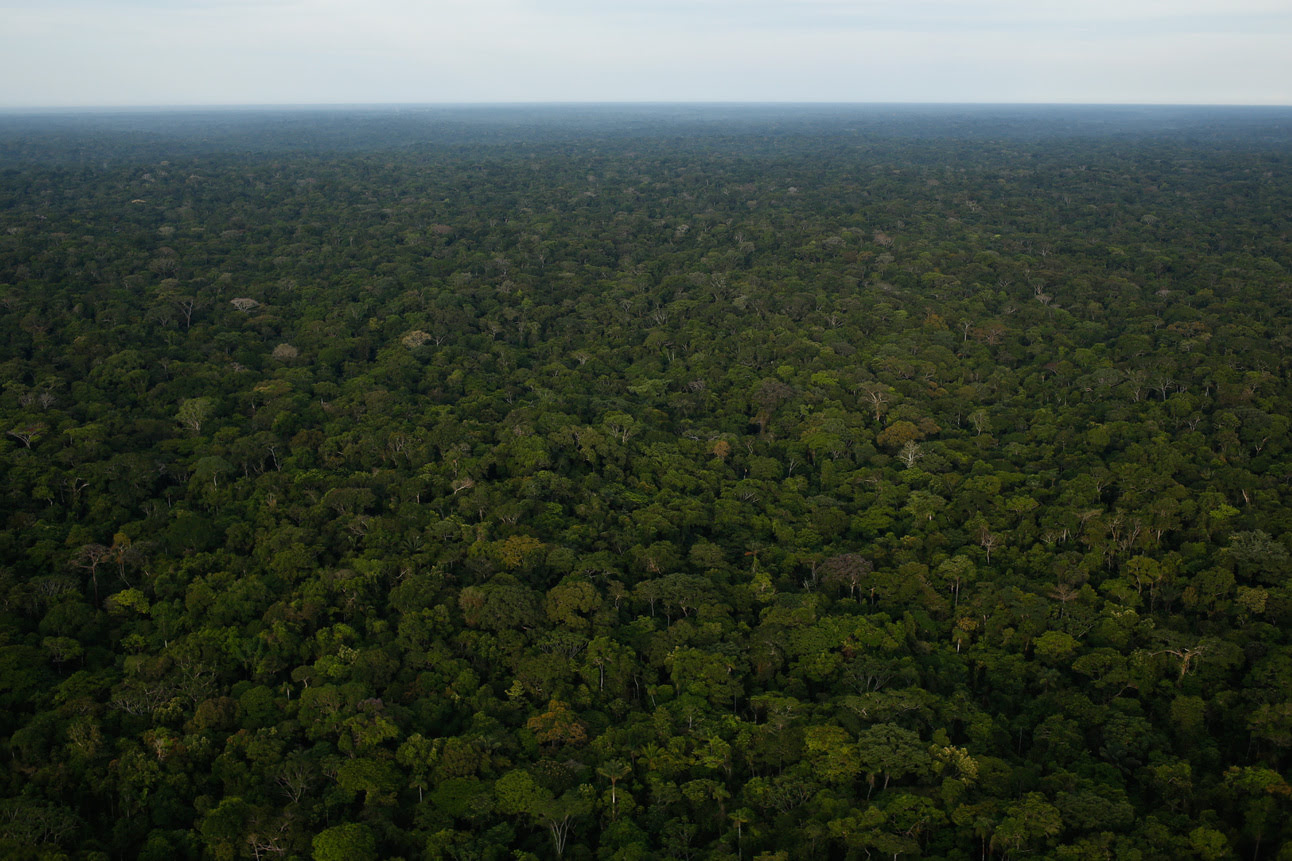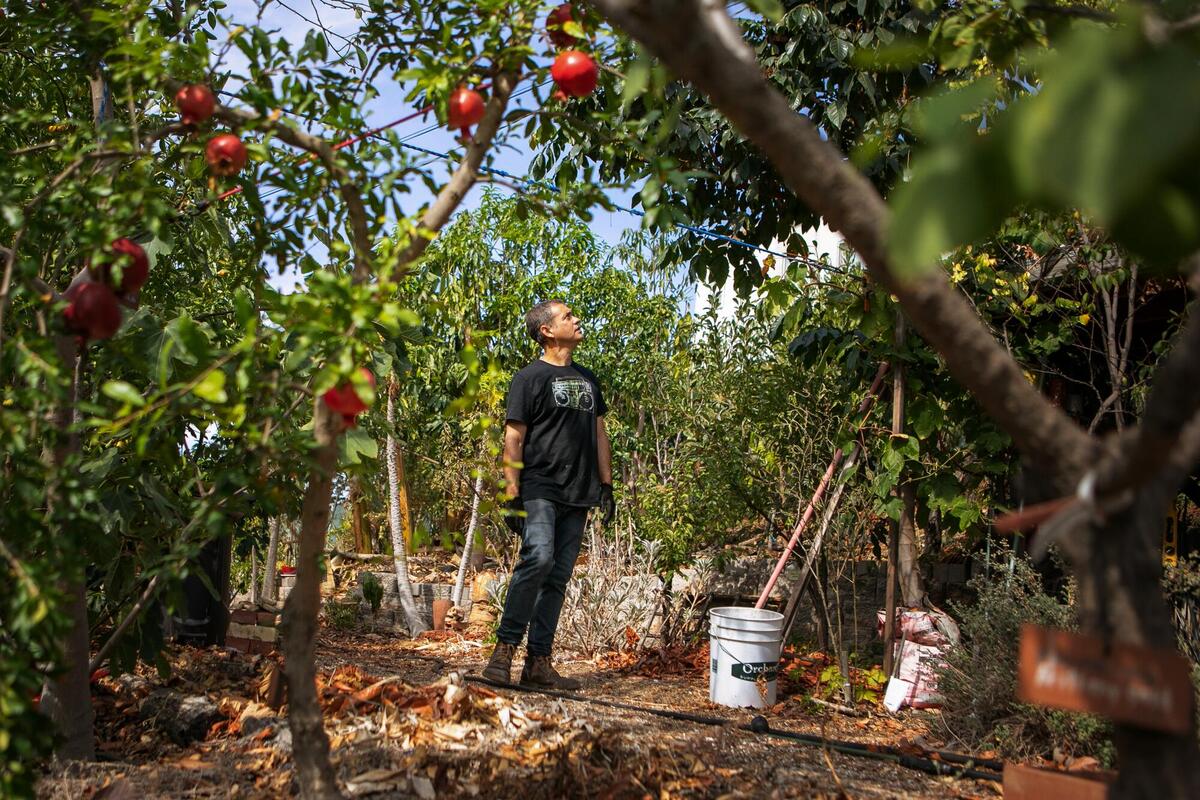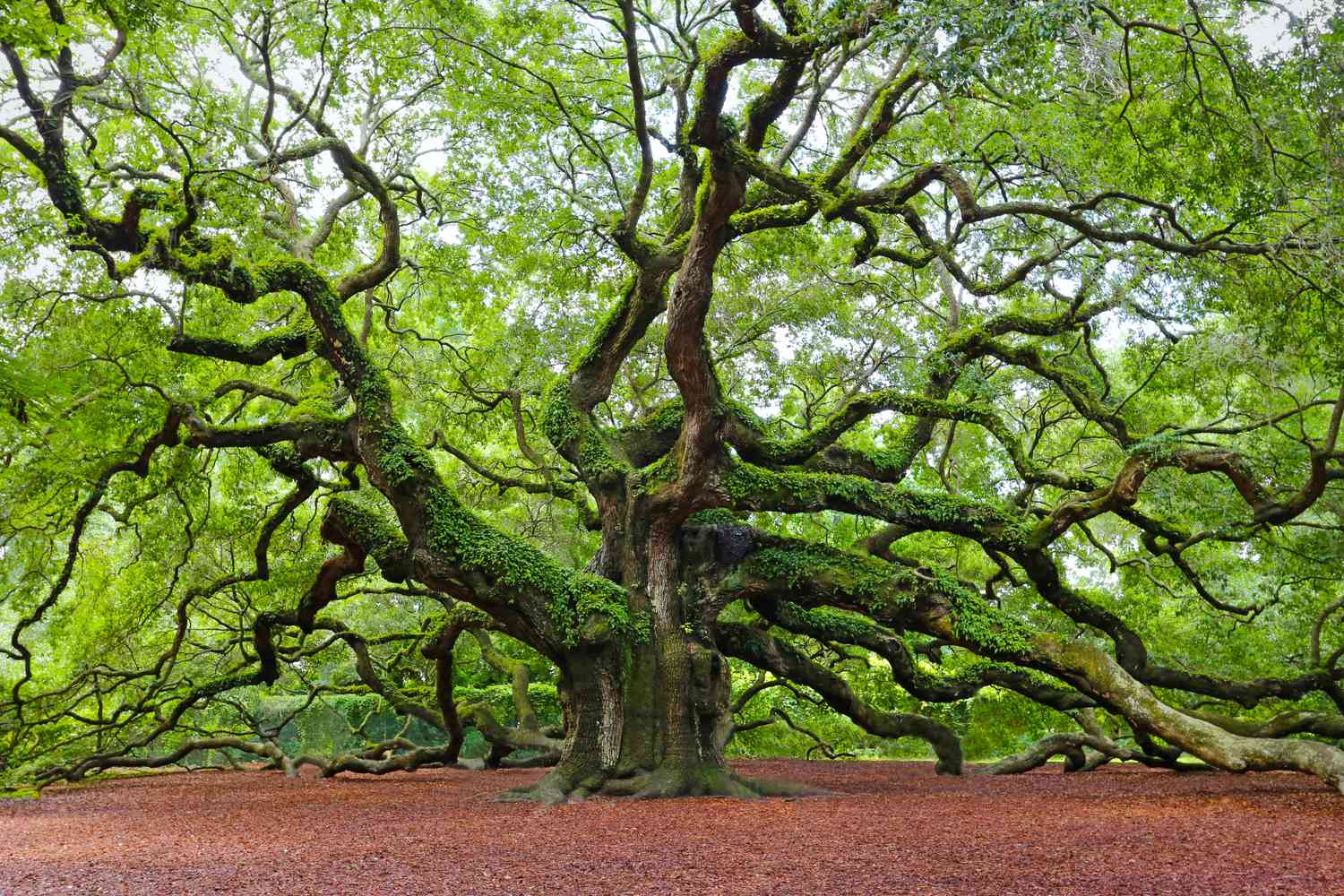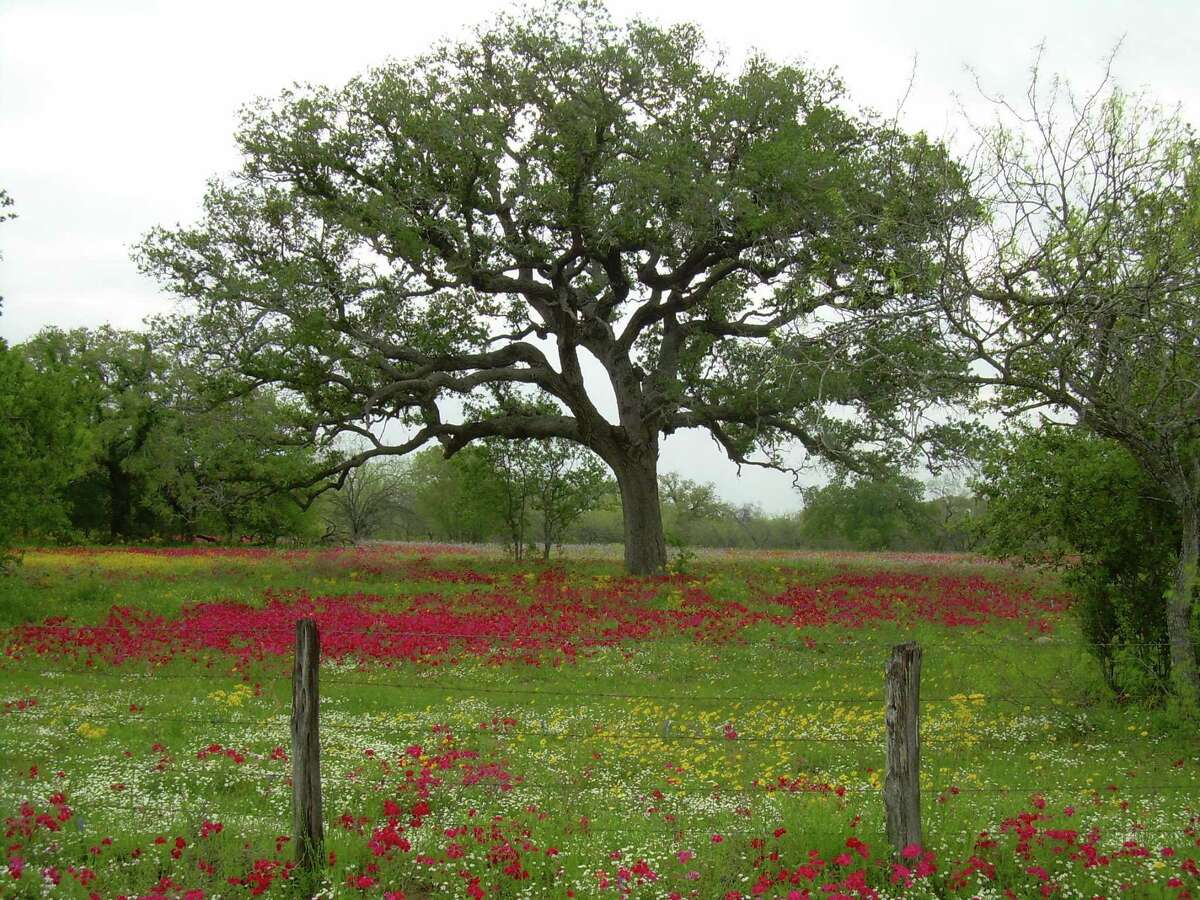Home>Gardening News and Trends>Latest News>How Many Oak Trees Are There


Latest News
How Many Oak Trees Are There
Modified: January 22, 2024
Discover the latest news on how many oak trees there are around the world. Stay informed with the most up-to-date information on this fascinating subject.
(Many of the links in this article redirect to a specific reviewed product. Your purchase of these products through affiliate links helps to generate commission for Chicagolandgardening.com, at no extra cost. Learn more)
Table of Contents
Introduction
Oak trees are a beloved and iconic part of many landscapes around the world. These magnificent trees not only serve as a shelter for wildlife, but they also provide shade, oxygen, and contribute to the overall health of the ecosystem. However, despite their significance, there is a need to understand the population dynamics of oak trees and the factors that affect their numbers.
Counting the exact number of oak trees is a challenging task due to their wide distribution and the variations in their growth patterns. Moreover, the populations of oak trees are constantly changing due to various environmental factors such as climate change, deforestation, and land-use changes.
Estimating the population size of oak trees is crucial for a multitude of reasons. Firstly, it helps researchers and conservationists assess the health and status of oak tree populations in a given area. This information can then be used to formulate targeted conservation strategies to protect and restore oak tree habitats. Additionally, understanding oak tree populations is important for studying biodiversity patterns, as these trees are known to support a wide range of plant and animal species.
In this article, we will explore the factors that influence the population size of oak trees and the methods employed to estimate their numbers. We will also discuss the challenges faced in counting oak trees accurately. Finally, we will explore the implications of oak tree population size and the various conservation efforts being undertaken to protect these majestic trees.
Factors Affecting Oak Tree Population
The population dynamics of oak trees are influenced by a variety of factors. Understanding these factors is crucial for assessing the health and sustainability of oak tree populations. Some key factors that affect the population of oak trees include:
- Climate: Oak trees are adapted to specific climatic conditions, and changes in climate can have a significant impact on their growth and survival. Extreme weather events such as droughts, heatwaves, and storms can lead to increased mortality rates and reduced reproductive success among oak trees.
- Habitat Loss and Fragmentation: The loss and fragmentation of oak tree habitats due to urbanization, agriculture, and logging are major threats to their populations. As their habitats are destroyed or divided, oak trees face difficulties in dispersing their seeds, finding suitable sites for germination, and establishing healthy populations.
- Pest and Disease Outbreaks: Oak trees are vulnerable to various pests and diseases, such as oak wilt and oak leaf blister. These outbreaks can cause significant damage to oak tree populations, leading to widespread decline and mortality.
- Competition from Invasive Species: Invasive plant species, such as Japanese knotweed and multiflora rose, can outcompete oak trees for resources such as water, nutrients, and sunlight. This competition can hinder the growth and regeneration of oak tree populations.
- Wildlife Interactions: Interactions with wildlife, both beneficial and detrimental, can influence oak tree populations. For instance, certain animals like squirrels and jays play a vital role in seed dispersal, while others may feed on oak tree seedlings, impacting their establishment and survival.
It is important to note that these factors often interact with each other and can have synergistic effects on oak tree populations. For example, habitat loss can make oak trees more susceptible to pest infestations, and climate change can exacerbate the impacts of disease outbreaks. Therefore, a comprehensive understanding of these factors is crucial for effective oak tree conservation and management.
Estimating Oak Tree Numbers
Estimating the precise number of oak trees in a given area is a complex task due to their wide distribution and diverse habitats. However, scientists and researchers employ various methods to gain insights into oak tree populations. These methods include:
- Field Surveys: Field surveys involve physically visiting a designated area and conducting a visual count of oak trees. This method is time-consuming and labor-intensive but can provide valuable data on oak tree distributions and abundances.
- Remote Sensing: Remote sensing techniques, such as aerial photography and satellite imagery, are utilized to estimate oak tree populations over large areas. These methods rely on analyzing the spectral signature of oak trees to identify and map their locations.
- Sampling Techniques: Sampling techniques involve selecting representative areas within a larger region and conducting detailed surveys on oak tree populations in those areas. The data collected from the sampled sites are then extrapolated to estimate the overall oak tree numbers.
- Community Science: Community science, also known as citizen science, involves engaging the public in collecting oak tree population data. Volunteers, such as nature enthusiasts and local residents, contribute by reporting oak tree sightings and measurements, thereby providing valuable information for population estimation.
Each method has its advantages and limitations. Field surveys provide detailed information on individual oak trees but may not be feasible for large-scale assessments. Remote sensing techniques are efficient for large-scale monitoring, but they may lack accuracy in identifying specific oak tree species. Sampling techniques strike a balance between accuracy and efficiency, but the representativeness of the sampled areas is crucial for reliable estimates.
In recent years, the integration of various methods, such as combining field surveys with remote sensing data, has improved the accuracy and efficiency of estimating oak tree numbers. Additionally, advancements in technology, such as drone-based surveys and machine learning algorithms, are being explored for more precise and automated population assessments.
Overall, estimating oak tree numbers is a continuous endeavor that requires ongoing monitoring and the integration of multiple approaches. These estimates provide valuable information for conservation planning, resource management, and understanding the ecological roles of oak trees within their ecosystems.
Methods Used for Counting Oak Trees
Counting oak trees accurately requires the use of various methods and techniques. These methods take into account factors such as tree density, distribution, and accessibility. Here are some commonly used methods for counting oak trees:
- Transect Sampling: Transect sampling involves randomly selecting linear paths or transects within a study area and counting the number of oak trees along these lines. This method provides information on tree density and distribution patterns. It is particularly useful when studying large areas.
- Plot Sampling: Plot sampling entails establishing fixed sample plots within a defined area. Researchers systematically count and identify oak trees within these plots, providing information on tree density and species composition. Plot sampling is commonly used in forest inventories and long-term monitoring studies.
- Aerial Surveys: Aerial surveys employ aircraft or drones equipped with high-resolution cameras to capture imagery of oak tree populations from above. These images are then analyzed to identify and count individual trees. Aerial surveys are particularly useful for large-scale assessments and in areas with difficult terrain or limited accessibility for ground surveys.
- Community Science: Community science, also known as citizen science, involves engaging the public in collecting data on oak tree populations. Volunteers contribute by reporting oak tree sightings, measurements, or participating in surveys. This method enables large-scale data collection and encourages public participation in conservation efforts.
- Remote Sensing: Remote sensing techniques use satellite imagery or aerial photographs to estimate oak tree populations. These methods rely on identifying and mapping spectral characteristics or patterns associated with oak tree canopies. Remote sensing allows monitoring over large areas and can provide valuable insights into the overall distribution and health of oak trees.
Each method has its own advantages and limitations. Ground-based methods like transect and plot sampling provide detailed information on individual trees but may not be practical for large areas. Aerial surveys and remote sensing techniques are efficient for large-scale assessments, but their accuracy may vary depending on image resolution and vegetation type classification.
Moreover, to ensure accuracy and reliability, multiple methods are often used in combination. For example, ground-based surveys may be combined with aerial imagery analysis or remote sensing data to improve the overall estimation accuracy.
It is important to note that these methods are not one size fits all. The choice of method depends on the research objectives, available resources, and the specific characteristics of the oak tree population being studied. Through the use of these methods, researchers and conservationists can gain valuable insights into oak tree populations, contributing to their effective management and protection.
Challenges in Counting Oak Trees
Counting oak trees presents several challenges due to the nature of these trees and the complexities involved in their population assessments. Some of the key challenges in counting oak trees include:
- Variability in Growth Patterns: Oak trees exhibit a wide range of growth patterns, including variations in size, shape, and canopy structure. This variability makes it challenging to accurately identify and count individual trees, especially when relying on visual assessments.
- Density and Distribution: Oak trees can occur in dense clusters or be scattered across landscapes. Their spatial distribution makes it difficult to survey large areas and obtain representative data on their population size. Different methods must be employed to adequately capture their abundance.
- Access to Remote Areas: Some oak tree populations may occur in remote or inaccessible areas, such as mountainous regions or dense forests. These areas pose logistical challenges for researchers, making it difficult to conduct detailed ground-based surveys and obtain comprehensive population estimates.
- Species Identification: Oak trees belong to a diverse genus comprising numerous species and hybrids. Accurate species identification is essential for population assessments, as distinct species may have different ecological roles and conservation needs. However, identifying oak tree species solely based on visual characteristics can be challenging, especially for non-experts.
- Reproductive Diversity: Oak trees have complex reproductive strategies, including variations in seed production, dispersal methods, and germination requirements. These factors can influence oak tree establishment and abundance, making it challenging to capture the complete picture of their populations solely based on census counts.
- Sampling Bias: When employing sampling techniques, researchers must carefully design sampling protocols to minimize sampling bias. Failure to account for variations in habitat types, tree densities, or other environmental factors can result in skewed population estimates that do not accurately represent the entire oak tree population.
Overcoming these challenges requires a combination of careful study design, integration of multiple counting methods, and collaboration between researchers, experts, and the public. Employing advanced technologies, such as aerial surveys, remote sensing, and community science, can help overcome some of these challenges and provide more accurate estimates of oak tree populations.
Despite these challenges, ongoing efforts to monitor and count oak trees are crucial for understanding their populations, assessing conservation needs, and implementing effective management strategies to ensure the long-term survival of these invaluable trees.
Results and Findings
The efforts to count and assess oak tree populations have yielded important results and findings that contribute to our understanding of these magnificent trees. Here are some key results and findings from various studies:
- Population Trends: Studies across different regions have revealed both positive and negative trends in oak tree populations. In some areas, oak tree populations have declined due to habitat loss, fragmentation, and disease outbreaks. In contrast, in certain protected areas or areas with active restoration efforts, oak tree populations have shown signs of recovery and stability.
- Species Composition: Surveying oak tree populations has provided insights into the species composition within specific regions. Researchers have documented the presence of different oak tree species, including dominant species and rare or threatened species. These findings contribute to our understanding of regional biodiversity patterns and inform conservation efforts.
- Habitat Connectivity: Research on oak tree populations has highlighted the importance of maintaining habitat connectivity for their long-term survival. Oak trees depend on the presence of interconnected habitats to facilitate seed dispersal, genetic exchange, and colonization of new areas. The identification of key corridors and the establishment of wildlife corridors have been among the key findings in this regard.
- Ecological Interactions: Studying oak tree populations has shed light on their ecological interactions with other organisms. Researchers have explored the relationships between oak trees and their associated fauna, such as birds, insects, and mammals. These findings provide insights into the crucial ecological roles that oak trees play in supporting diverse ecosystems.
- Longevity and Growth Rates: Several studies have focused on studying oak tree longevity and growth rates. By analyzing tree rings and growth patterns, researchers have estimated the age of oak trees and examined the factors influencing their growth rates. These findings help us understand the life history strategies of oak trees and their response to environmental conditions.
The results and findings from these studies emphasize the importance of continuous monitoring, research, and conservation efforts for oak tree populations. They provide valuable baseline data for assessing the status and health of oak tree populations and guide the development of targeted management practices to ensure their long-term survival.
It is worth noting that ongoing research and data collection are essential for keeping pace with the dynamic nature of oak tree populations and understanding their response to environmental changes. Such efforts are crucial not only for the conservation of oak trees but also for the preservation of the diverse ecosystems that rely on their presence.
Implications of Oak Tree Population Size
The population size of oak trees has significant implications for both the environment and human communities. Understanding and addressing the implications of oak tree population size are crucial for conservation efforts and sustainable management. Here are some key implications to consider:
- Biodiversity Conservation: Oak trees play a critical role in supporting biodiversity by providing habitat and food sources for an array of plant and animal species. Their large canopies and abundant acorn production create favorable conditions for a diverse range of organisms. Therefore, maintaining healthy oak tree populations is essential for conserving overall ecosystem biodiversity.
- Ecosystem Services: Oak trees provide numerous ecosystem services that benefit both wildlife and humans. They help regulate local climate by providing shade and cooling effects, maintain soil health through nutrient cycling, and contribute to water quality by filtering runoff. Additionally, oak trees sequester carbon dioxide, mitigating the impacts of climate change. Preserving and restoring oak tree populations ensures the provision of these vital ecosystem services.
- Wildlife Habitat: Oak trees are key providers of habitat for a wide range of wildlife species, including birds, mammals, insects, and fungi. They provide nesting sites, food sources, and shelter for many species. Sustaining healthy oak tree populations directly supports the conservation of wildlife, promotes biodiversity, and maintains the ecological balance within ecosystems.
- Cultural and Historical Significance: Oak trees hold cultural and historical significance in many societies around the world. They have been revered for their longevity, strength, and symbolic value throughout history. Oak tree populations contribute to the preservation of cultural landscapes, heritage sites, and traditional knowledge. Preserving oak tree populations helps maintain our connection to our cultural and historical roots.
- Economic Value: Oak trees have economic value in various sectors, including forestry, timber production, and tourism. They provide high-quality wood used in furniture, flooring, and construction. Oak tree-rich landscapes also attract tourists, contributing to local economies. The decline of oak tree populations can have economic repercussions, affecting these industries and diminishing the economic benefits they provide.
Understanding the implications of oak tree population size underscores the importance of implementing conservation measures and sustainable management practices. Protecting and restoring oak tree populations not only ensures the preservation of biodiversity and ecosystem services but also sustains cultural heritage, supports local economies, and enhances the overall well-being of both wildlife and human communities.
Conservation Efforts for Oak Trees
The conservation of oak trees is vital for preserving biodiversity, protecting ecosystem services, and maintaining cultural and historical heritage. As oak tree populations face numerous threats, various conservation efforts have been implemented to ensure their long-term survival. Here are some key conservation strategies and initiatives:
- Habitat Protection and Restoration: One of the primary conservation strategies for oak trees is the protection and restoration of their habitats. This involves designating protected areas, such as national parks and nature reserves, where oak tree populations can thrive undisturbed. Additionally, efforts are made to restore degraded habitats through reforestation and implementing sustainable land management practices.
- Public Awareness and Education: Raising public awareness about the importance of oak trees and their conservation is crucial for their protection. Educating communities, schools, and the general public about the ecological and cultural significance of oak trees helps instill a sense of stewardship and encourages active participation in conservation efforts.
- Community Involvement: Engaging local communities in oak tree conservation is essential for sustainable outcomes. Collaborating with landowners, local organizations, and indigenous communities ensures that conservation efforts are inclusive and align with the needs and priorities of the people who live in proximity to oak tree habitats.
- Managing Threats: Effectively managing and mitigating the threats to oak trees is crucial for their conservation. This includes controlling invasive species, monitoring and preventing disease outbreaks, and implementing sustainable forestry practices that minimize the negative impacts on oak tree populations. Managing threats also involves addressing climate change through actions that promote adaptation and resilience.
- Research and Monitoring: Ongoing research and monitoring programs provide critical data on the status of oak tree populations, enabling informed decision-making and adaptive management. Monitoring the health, abundance, and distribution of oak trees helps identify population trends, detect early signs of decline, and assess the effectiveness of conservation actions.
The collaboration between diverse stakeholders, including scientists, conservation organizations, government agencies, and local communities, is crucial for the success of oak tree conservation efforts. By combining knowledge, resources, and expertise, these stakeholders can implement comprehensive strategies that address the multifaceted challenges faced by oak trees.
It is important to recognize that oak tree conservation is a long-term endeavor that requires sustained commitment and dedication. Ongoing efforts are essential to ensure that future generations can continue to enjoy the numerous benefits provided by these iconic and ecologically significant trees.
Conclusion
Oak trees are invaluable components of our natural landscapes, providing numerous benefits to the environment, wildlife, and human communities. However, their populations face significant challenges due to factors such as habitat loss, climate change, and disease outbreaks. Efforts to understand and conserve oak tree populations are crucial for their long-term survival and the preservation of biodiversity.
Through various methods, including field surveys, remote sensing, and community science, researchers have made significant progress in estimating oak tree numbers and understanding the factors influencing their populations. Results and findings from these studies have highlighted the importance of oak trees in maintaining biodiversity, providing ecosystem services, and supporting cultural heritage.
However, counting oak trees is not without difficulties. Challenges such as variability in growth patterns, access to remote areas, and species identification require careful study designs and a combination of counting methods. Overcoming these challenges requires ongoing research, technological advancements, and collaborative efforts among researchers, conservationists, and the public.
The implications of oak tree population size are extensive, ranging from biodiversity conservation to the provision of ecosystem services and economic benefits. Understanding these implications underscores the urgent need to protect and restore oak tree habitats, engage local communities, and manage threats effectively.
Conservation efforts for oak trees involve habitat protection and restoration, public awareness and education, community involvement, threat management, and ongoing research and monitoring. The collaboration between diverse stakeholders is essential for the success of these efforts.
In conclusion, the conservation of oak trees is vital for the well-being of our ecosystems and societies. By prioritizing oak tree conservation, we can ensure the preservation of biodiversity, protect ecosystem services, maintain cultural heritage, and promote sustainable management practices for the benefit of current and future generations.
References
1. Díaz-Pérez, L., Campos, P., & Vilà, M. (2020). The Impacts of Oak Decline on Biodiversity in Mediterranean Forest Landscapes: A Meta-Analysis. Forests, 11(3), 284. doi: 10.3390/f11030284
2. Fuentes-Ramírez, A., Calama, R., Madrigal-González, J., & Linares, J. C. (2019). Effects of Climate Change on Oak Tree Growth and Silvicultural Management Approaches. Forests, 10(8), 610. doi: 10.3390/f10080610
3. Johnson, D. H., & Ives, A. R. (2015). The Role of Acorns in Sustaining the Vertebrate Community in Oak Savannas. Ecology, 96(5), 1234-1242. doi: 10.1890/14-0930.1
4. Knops, J. M. H., Kriebel, R., & Waggy, M. A. (2018). Oak Deprivation Reduces Chipmunk Dispersal of Bur Oak Acorns. American Midland Naturalist, 179(2), 272-278. doi: 10.1674/0003-0031-179.2.272
5. Leskinen, P., & Kangas, A. S. (2019). Estimating Number of Trees Using Airborne Laser Scanning Data: A Review of Estimation Techniques. Remote Sensing, 11(15), 1850. doi: 10.3390/rs11151850
6. Whelan, R. J., & Goldingay, R. L. (2019). Tree Hollows and Wildlife Conservation in Australia. CSIRO Publishing.
7. Williams, P., Gibbons, D., Margules, C., Rebelo, T., Humphries, C., Pressey, R., & Possingham, H. (1996). A Comparison of Richness Hotspots, Rarity Hotspots, and Representativeness-Based Approaches for Conserving Diversity of British Birds. Conservation Biology, 10(1), 155-174. doi: 10.1046/j.1523-1739.1996.10010155.x
8. Yang, F., He, G., & Tang, Z. (2018). Remote Sensing and GIS for Forest Monitoring. In P. M. Scarlett & T. R. Elmqvist (Eds.), Forests in a Changing Climate: A Sourcebook for Integrative Learning (pp. 233-245). Cambridge University Press.
9. Zhai, H., & Berger, C. (2019). Traditional-Based Knowledge on Acorn Processing, Storage, and Consumption Among the Maya of Yucatan, Mexico. Economic Botany, 73(1), 95-104. doi: 10.1007/s12231-019-09473-y
